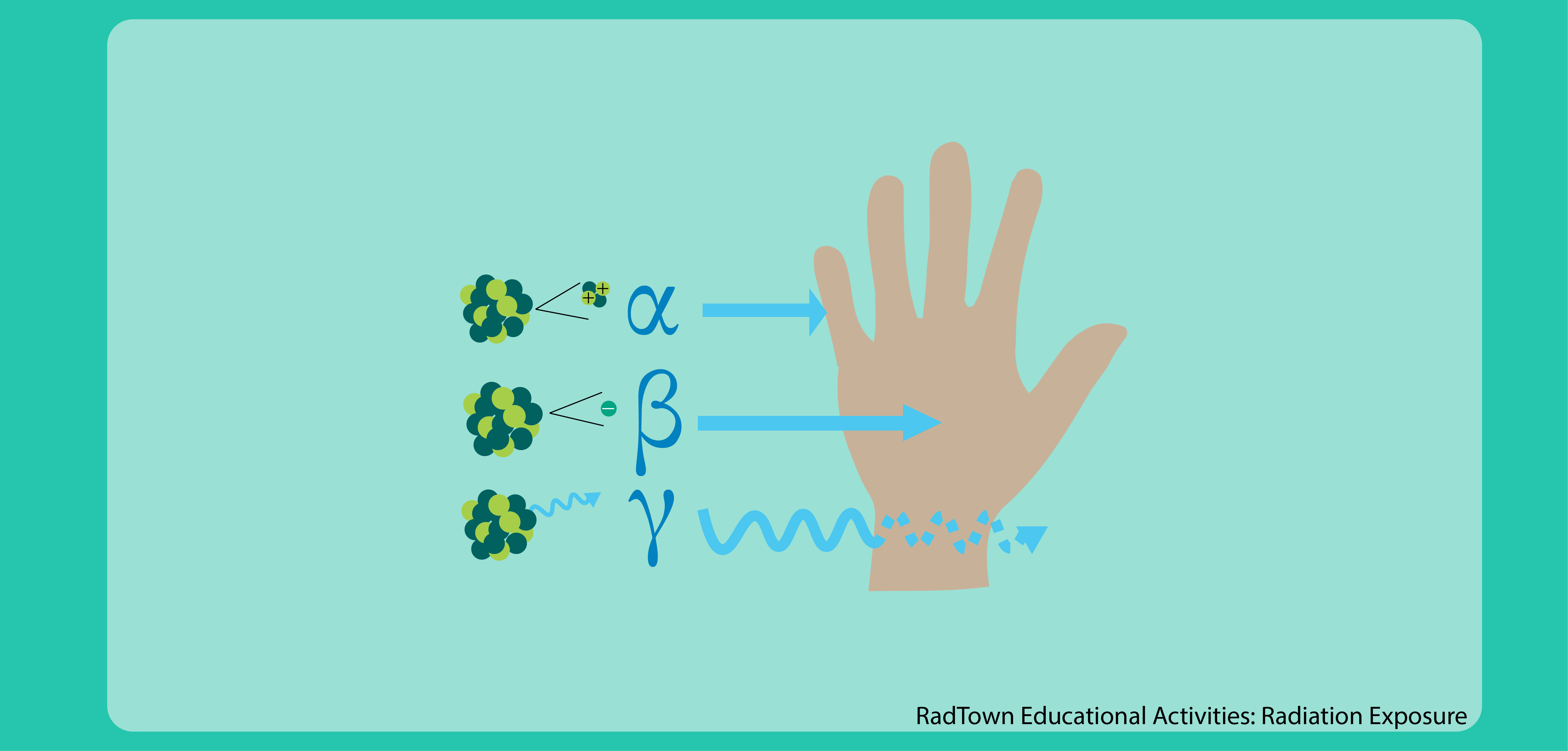RadTown Radiation Exposure Activity 6: Acute versus Chronic Exposure
Our exposure to radiation depends on three protective features: time, distance, and shielding. In this activity, students learn about long term exposure to low energy sources, and short-term exposure to high energy sources. Students will be asked to research and present historical events where these types of exposure have happened. This activity is intended for middle and high school students.
- Objectives
- Next Generation Science Standards
- Materials and Resources
- Printable Worksheets and Classroom Aids
- Time
- Vocabulary
- Directions
- Common Core State Standards
Objectives
Students will:
- Develop a basic understanding of acute and chronic radiation exposure.
- Differentiate between the two terms.
Next Generation Science Standards
The concepts in this activity can be used to support the following science standard:
- PS4. Waves and Electromagnetic Radiation
Materials and Resources
Each italicized document title can be found at the bottom of this page, and is available for printing and distribution.
- Radiation Exposure: Teacher Background Information
- Vocabulary Materials
- Student access to Internet and research sources (optional whether students conduct research in class or outside of class)
- Acute versus Chronic Exposure Worksheet (one per student, pair or group)
Printable Worksheets and Classroom Aids
Time
You may choose to have students complete the entire activity within one or two class periods (45-60 minutes, not including optional activities or extensions). If time or computer access is limited, the activity can be introduced, completed outside of the class and concluded in another class period.
Vocabulary
- Alpha particles
- Beta particles
- Direct exposure
- Gamma rays
- Ingestion
- Inhalation
- Ionizing radiation
- Man-made radiation
- Natural (background) radiation
- Radiation
- Radiation exposure
- X-rays
Directions
- Start with a vocabulary activity if students are not familiar with radiation and the terms used in this activity, or provide students with the terms and definitions.
- Explain that we encounter a variety of radiation sources in our everyday life, and generally, this does not cause any health concerns. However, there may be situations in which we encounter acute or chronic exposures to radiation.
- Describe the following situations and ask students to determine whether they are an example of acute or chronic exposure.
- A radiation source breaks and you are exposed to the radiation for a brief period. (Answer: Acute)
- You have been living in a home with high indoor radon levels for years. (Answer: Chronic)
- Ask students to describe how they came to their conclusion. Acute conditions are usually severe, sudden and only last a short time. Chronic conditions persist continuously or intermittently over a long period of time.
- Ask students to answer the following questions (orally or in writing):
- When might people experience acute radiation exposure? Acute doses can result from accidental exposures during an emergency or from specific medical procedures such as radiation therapy.
- When might people experience chronic radiation exposure? People may experience chronic exposure in a work setting if safety practices are not being followed or if radon levels in their home are high.
- Which presents a greater concern, acute or chronic radiation exposure? Why? Acute exposure, because the exposure dose is large and the exposure can lead to severe health effects. However, people may have to weigh the benefits and risks of some exposures. For example, radiation therapy may help fight cancer.
- Distribute the Acute versus Chronic Exposure Worksheet.
- Have students research and investigate incidents that resulted in acute or chronic exposure and answer the questions. Potential scenarios and those affected include Japanese atomic bomb survivors, natives of the Marshall Islands impacted by nuclear testing fallout, uranium miners, radiation industry workers or radium dial workers.
- Have students share their findings. Ensure that students have a correct understanding of the terms acute and chronic and the time span in which effects may occur. In most cases, an acute exposure to radiation causes both immediate and delayed effects. For chronic exposure, there is generally a delay of months or years between the exposure and the observed health effect. Health effects will vary greatly depending on the event students choose to research, but could include DNA or cellular damage, nausea, vomiting, cancer, or organ-specific effects (kidney failure, thyroid issues, etc.). Remind students that each person reacts differently to radiation exposure. The extent of the damage depends on the total amount of energy absorbed, the time period of the exposure, the dose rate of the exposure, and the particular organs exposed.
- Conclude by asking students what they learned from the activity and how the activity has changed their perceptions or concerns about radiation exposure.
The concepts in the Acute versus Chronic Exposure activity align with the following standards:
- CCSS English Language Arts Standards for Literacy in History/Social Studies, Science, & Technical Subjects:
- CCSS.ELA-Literacy.SL.6-12.4 Presentation of Knowledge and Ideas
- CCSS.ELA-Literacy.WHST.6-12.1 Text Types and Purposes
- CCSS.ELA-Literacy.WHST.6-12.9 Research to Build and Present Knowledge

